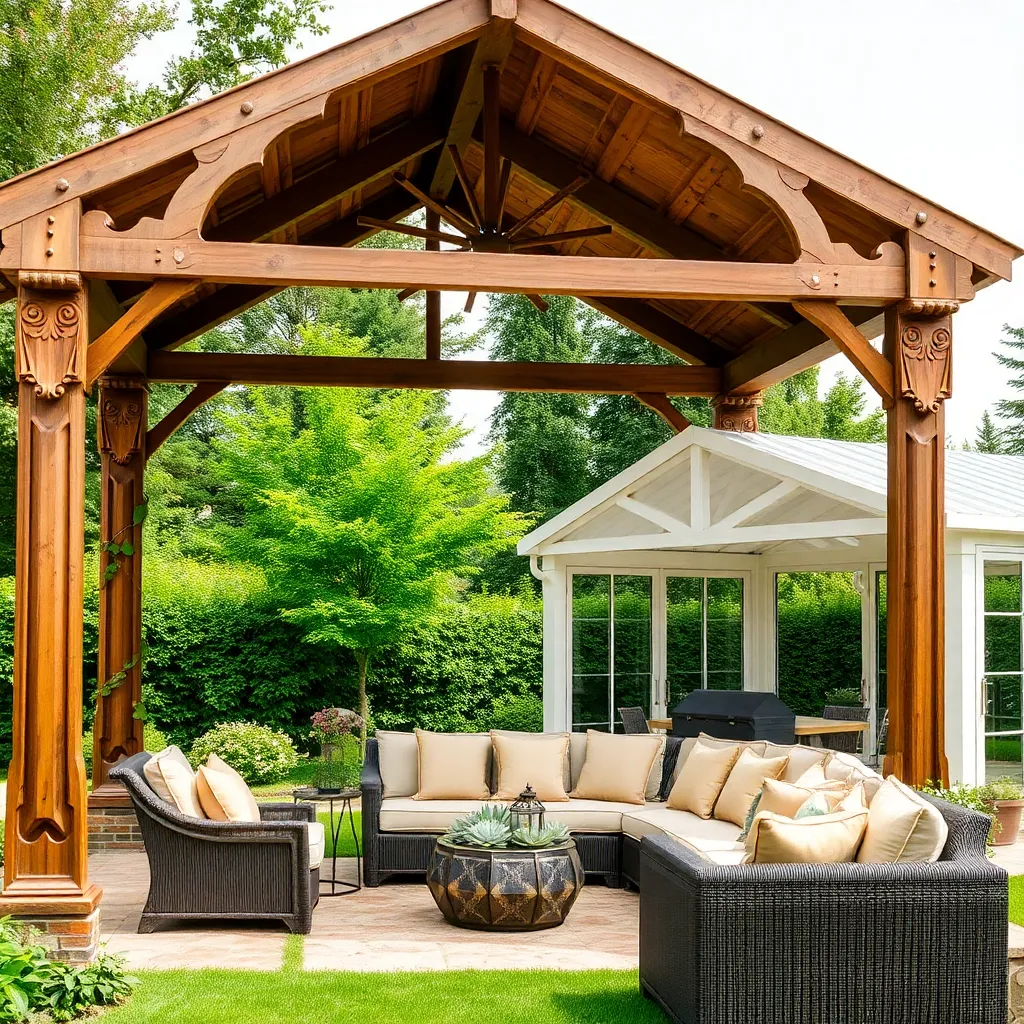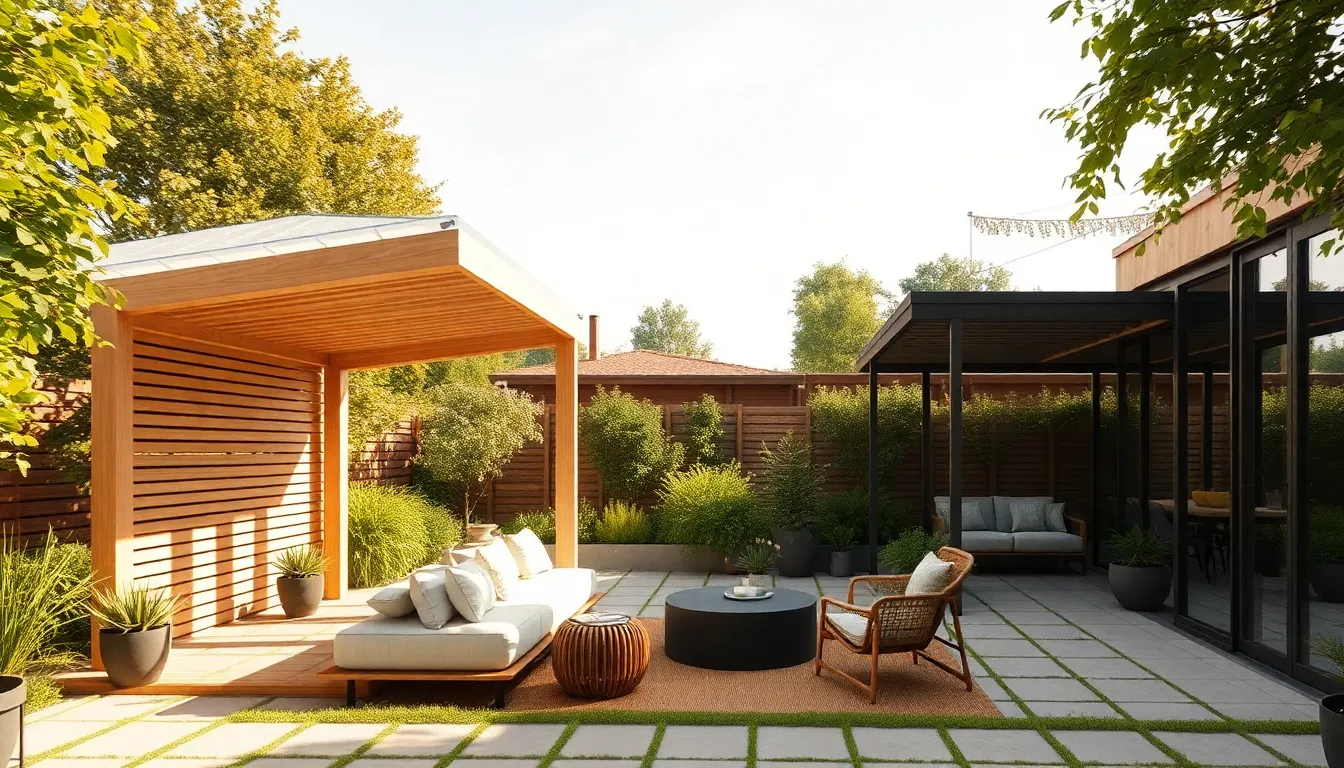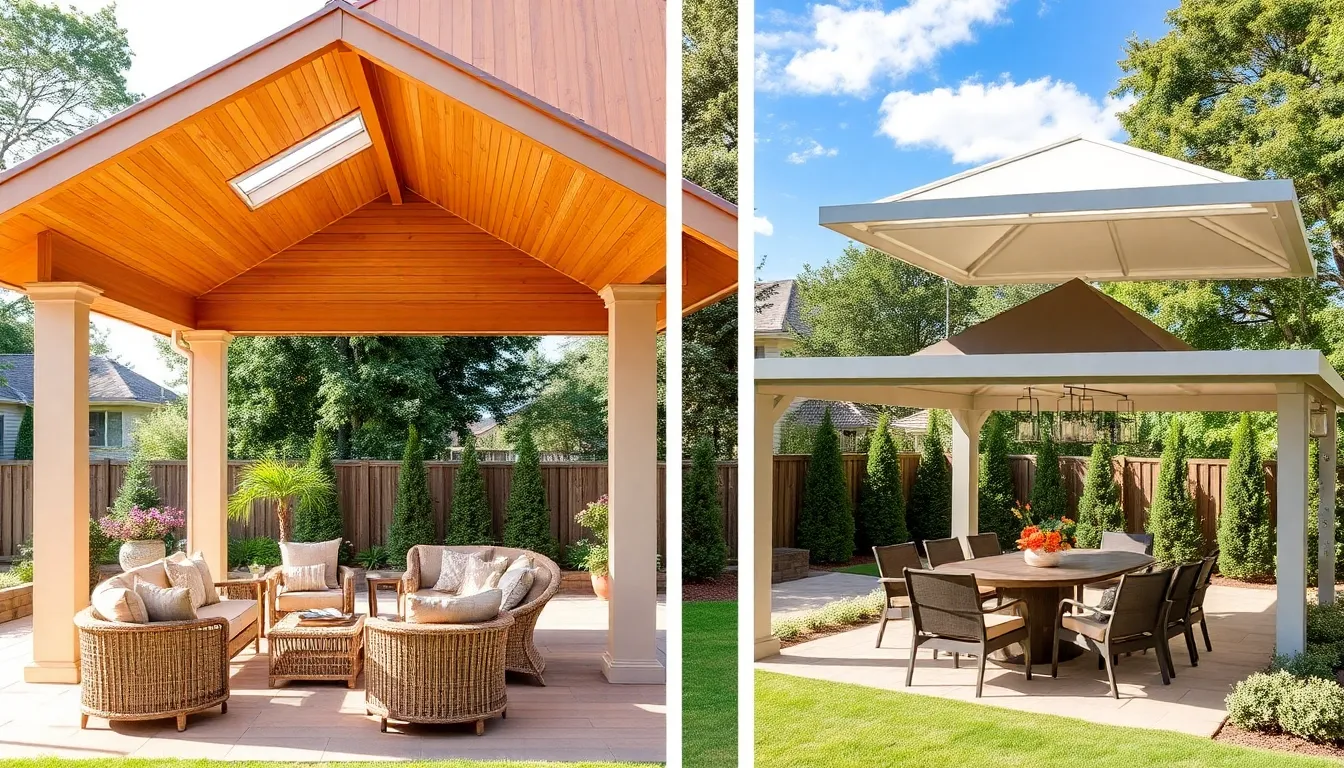Imagine transforming your backyard into a serene escape or a vibrant gathering hub, all with the strategic placement of a freestanding pavilion. Whether you’re a novice just beginning to explore outdoor design or a seasoned homeowner seeking fresh ideas, a pavilion can serve as the cornerstone of your outdoor living area. Its presence not only enhances your property’s aesthetic appeal but also offers a versatile space that adapts to various needs—from tranquil retreats to lively social settings.
In this article, we delve into 13 thoughtfully crafted pavilion layouts that cater to diverse tastes and requirements. You’ll discover practical insights on maximizing space, optimizing functionality, and seamlessly integrating these structures into your existing landscape. Join us as we navigate the possibilities, empowering you to create an outdoor haven that’s both inviting and uniquely yours.
Understanding Pavilion Layout Essentials
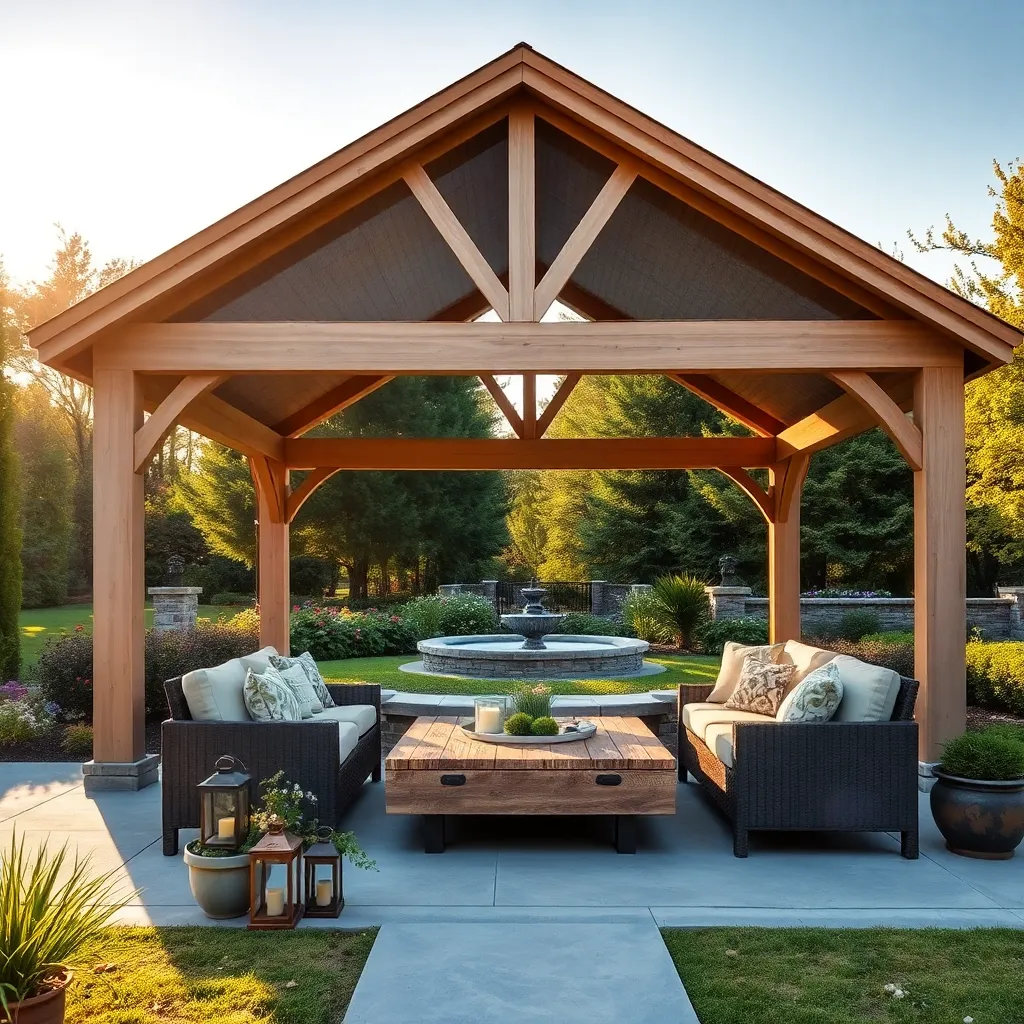
When planning your pavilion layout, it’s crucial to consider the intended use and how it complements your outdoor environment. Start by assessing the available space and choose the pavilion size accordingly—common dimensions range from 10×10 to 20×20 feet. Opt for weather-resistant materials like cedar, redwood, or pressure-treated lumber for the structure. These materials not only provide durability but also enhance the aesthetic appeal. For the flooring, consider composite decking or stone pavers for a low-maintenance yet stylish finish.
Incorporating design elements like lighting and furniture can elevate your pavilion’s functionality and comfort. Install LED string lights or mounted fixtures to create a warm ambiance for evening gatherings. To maximize usability, invest in versatile outdoor furniture such as weatherproof sofas or modular seating that can be easily rearranged. For an advanced touch, consider integrating a built-in grill or a small outdoor kitchen to transform your pavilion into a complete entertainment hub. These enhancements not only extend the usability of your space but also increase your property’s value.
Maximizing Space with Open Designs
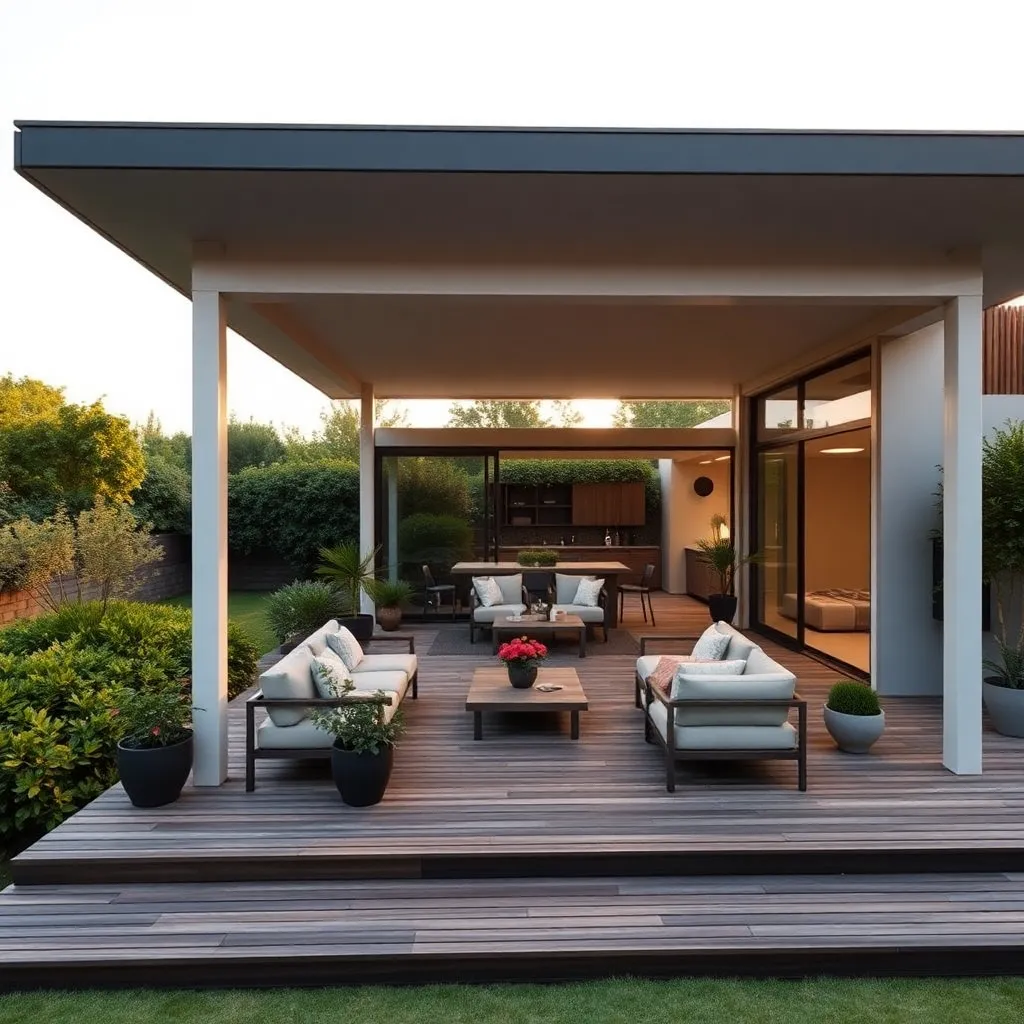
Open designs are an excellent way to maximize space in your outdoor pavilion, creating an inviting atmosphere that feels both spacious and functional. To achieve this, consider using materials like transparent polycarbonate roofing, which allows natural light to flood the area while protecting against the elements. Incorporating wide, unobstructed entryways enhances flow and accessibility, making your space more inviting for both intimate gatherings and larger events.
For a seamless blend with nature, use materials like natural stone or untreated wood, which contribute to a rustic charm while maintaining durability. Position your pavilion to take advantage of existing landscape features, like views or natural shade, to enhance the open design. For advanced builders, integrating cantilevered beams can provide additional overhang without the need for extra supports, maintaining the open feel while offering practical weather protection.
Incorporating Natural Light Strategies
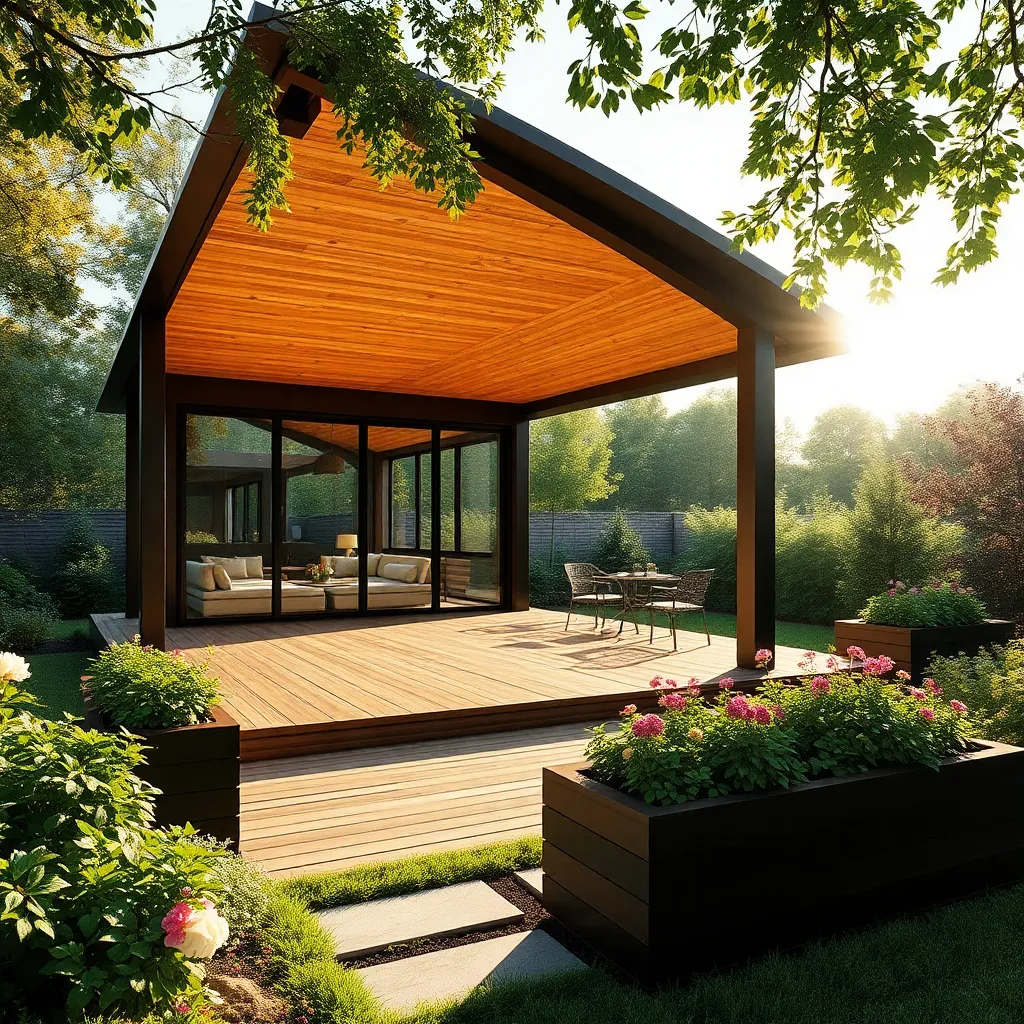
Incorporating natural light into your pavilion design not only enhances the aesthetic appeal but also makes the space more inviting. Start by positioning your pavilion to maximize sunlight exposure; this often means orienting it to the southeast for morning light or southwest for afternoon sun. For those looking to add architectural interest, consider using translucent roofing materials like polycarbonate panels, which allow light to filter through while providing protection from the elements. These materials are durable and available in various opacities to control the amount of light that enters.
Beyond orientation and roofing, you can also integrate strategic openings such as skylights or clerestory windows to usher in more daylight. Ensure these openings are placed where they can capture the most light without causing glare or overheating. For a more advanced touch, try incorporating adjustable louvers or retractable awnings that allow you to control light levels throughout the day. These features provide flexibility and enhance the pavilion’s usability, especially during changing seasons. Remember, even simple adjustments like adding reflective surfaces or light-colored finishes can dramatically amplify natural light within the space.
Designing for Optimal Airflow
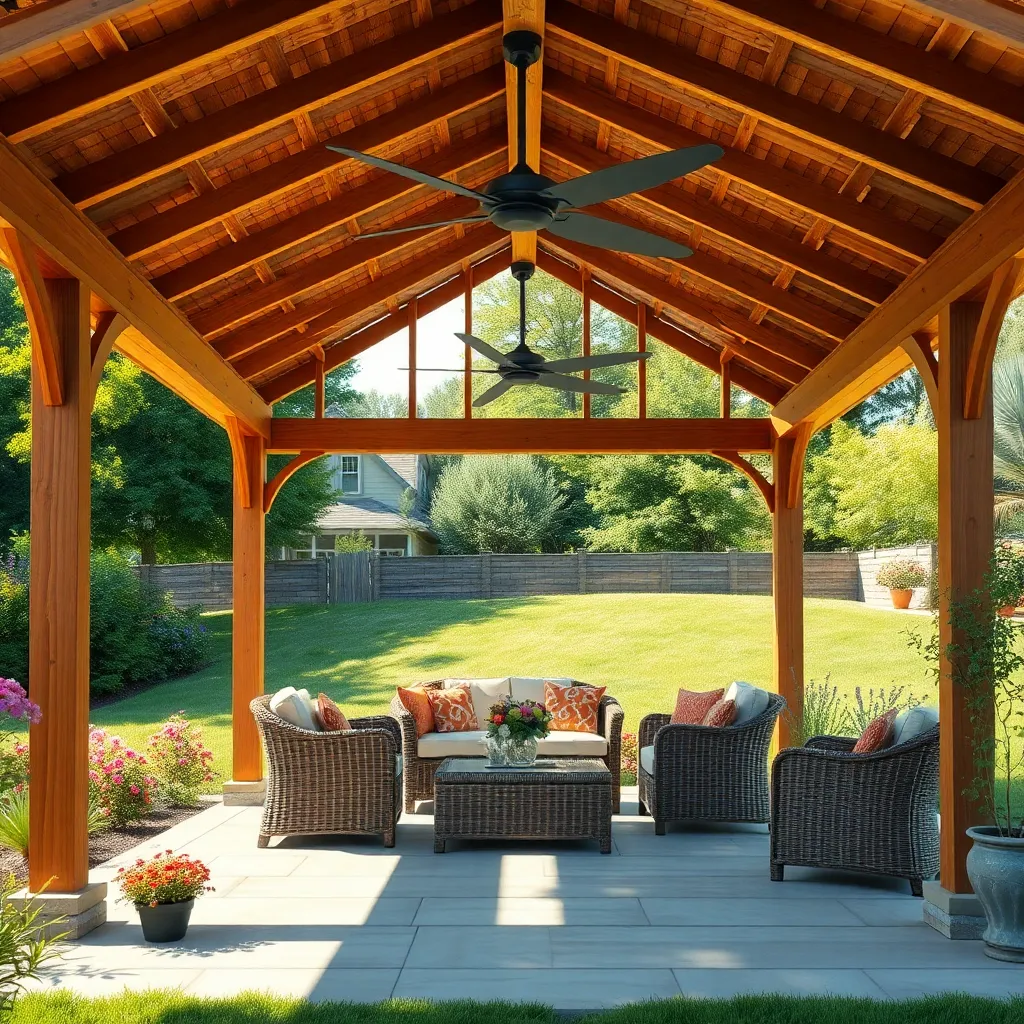
To design a freestanding pavilion with optimal airflow, it’s essential to consider the orientation and placement of your structure. Positioning your pavilion to take advantage of prevailing winds can significantly enhance air circulation, keeping the space cool and comfortable. For beginners, start by observing the wind patterns in your area and align your pavilion so that the openings, such as doors or open walls, face the wind. This simple strategy can make a substantial difference in ventilation.
Incorporating specific design elements can further improve airflow. Consider using materials like louvered panels or open latticework for walls, which allow air to flow freely while providing some shade and privacy. Advanced gardeners might explore adjustable louvers or retractable walls for dynamic airflow control. Pay attention to the dimensions; ensuring at least a 6-foot clearance from surrounding structures can prevent airflow obstruction. These steps will not only enhance comfort but also create an inviting outdoor retreat.
Integrating Seating Arrangements Effectively
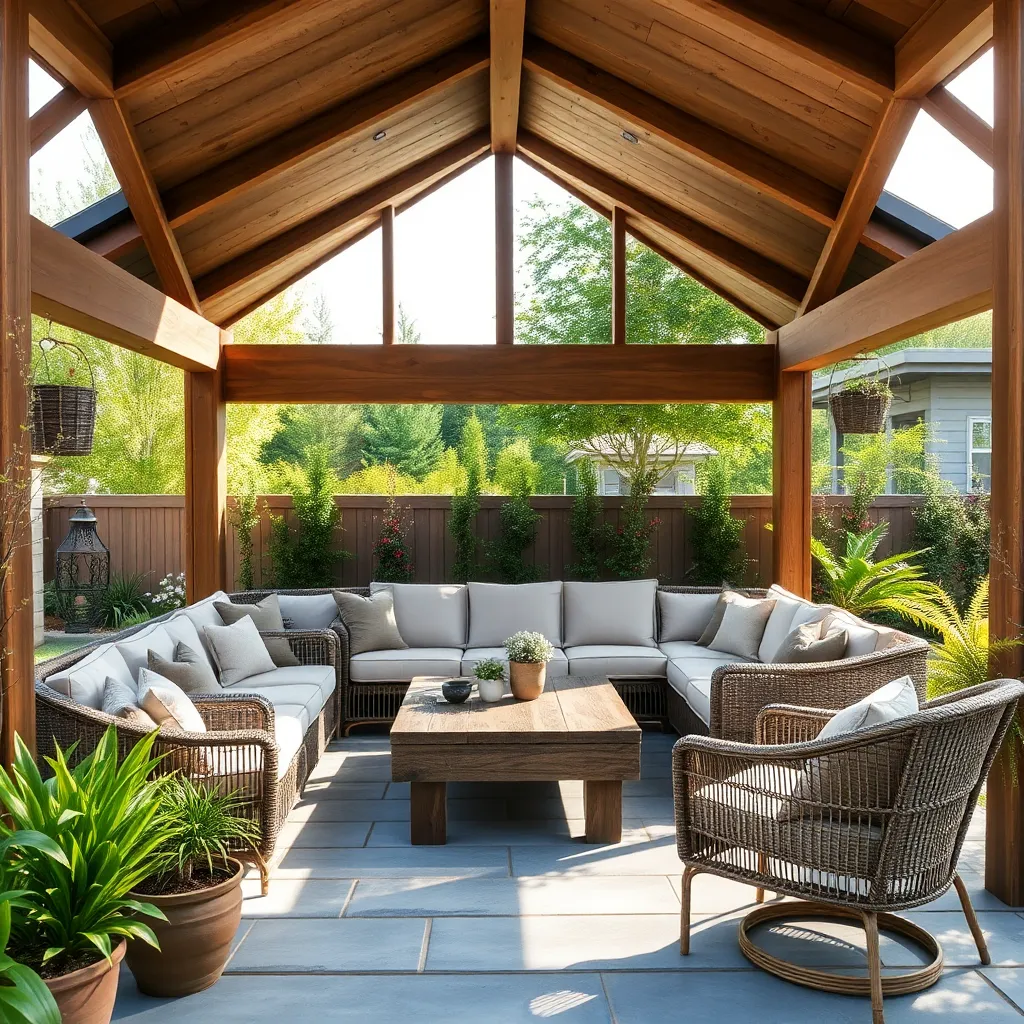
To effectively integrate seating arrangements in your freestanding pavilion, consider the flow of movement and accessibility. Opt for weather-resistant materials like teak or powder-coated aluminum that withstand the elements while offering comfort. Arrange seating to encourage conversation, perhaps in a circular or semi-circular layout, ensuring each chair or bench is easily accessible and not obstructing pathways.
For a more sophisticated design, incorporate varied seating options such as a combination of benches, lounge chairs, and built-in seating. This approach adds versatility and caters to different activities, from relaxing to dining. Advanced gardeners might explore custom-built features using natural stone or sustainably sourced wood, creating harmonious aesthetics that blend with the garden’s landscape. Aim for a balance between aesthetics and practicality, ensuring the area remains inviting and functional.
Customizing for Dining Experiences

To create an inviting dining experience under your freestanding pavilion, start by selecting durable, weather-resistant materials such as teak, cedar, or powder-coated aluminum for your furniture. Arrange tables and chairs to maximize space and facilitate easy movement, ensuring at least 3 feet of clearance on all sides. Opt for a rectangular or oval table if your space is limited, as they typically fit more guests than round tables. For an advanced touch, consider installing a retractable canopy or curtains to protect against sun and wind, adding both comfort and style.
Lighting plays a crucial role in setting the mood for your outdoor dining area. Incorporate a mix of ambient and task lighting to create a warm and welcoming atmosphere. String lights or lanterns can add a festive touch, while strategically placed solar path lights ensure safety and visibility. For those looking to enhance their shelter further, consider installing a built-in grill or outdoor kitchen station for convenience and culinary versatility. These elements not only enhance functionality but also transform your pavilion into a delightful dining destination.
Crafting Cozy Relaxation Zones
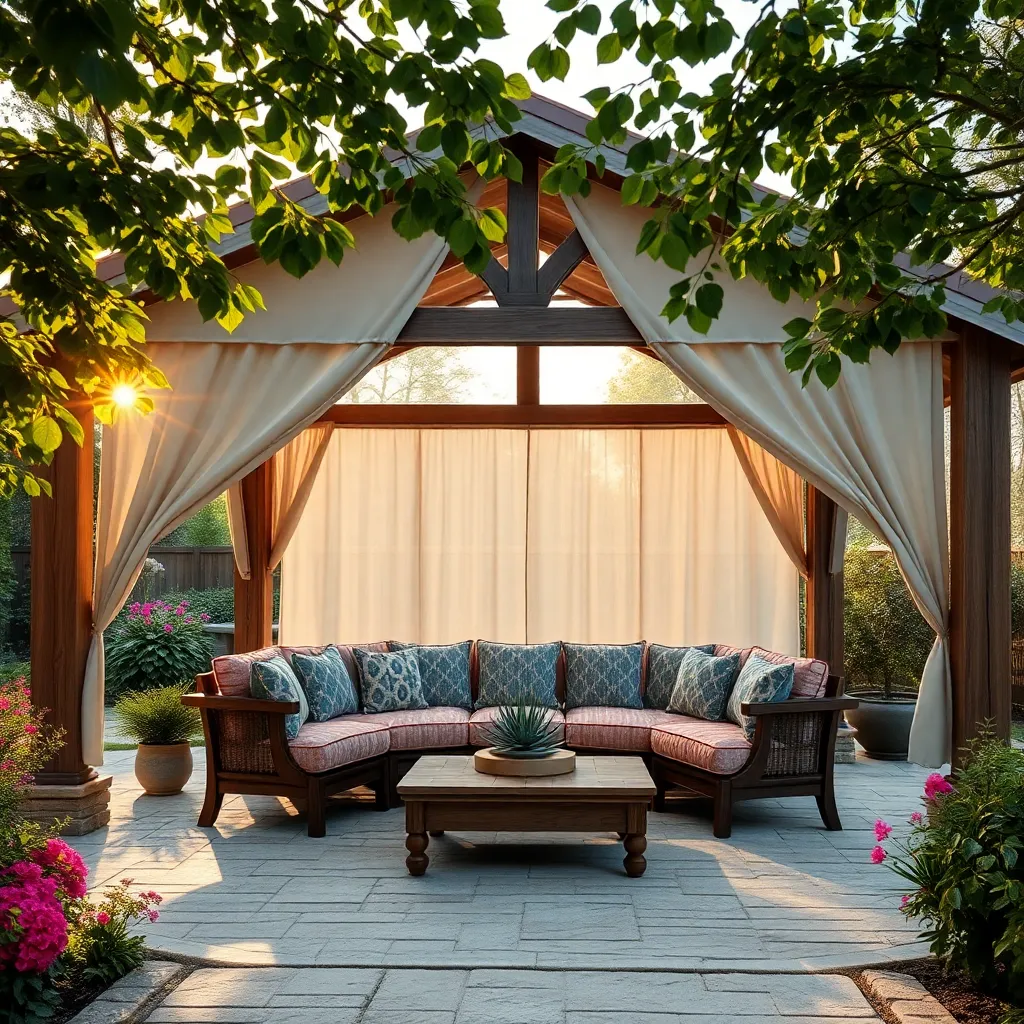
Creating a cozy relaxation zone within your pavilion involves careful selection of materials and thoughtful design elements. Consider using weather-resistant furniture, such as wicker or teak, with plush, outdoor-rated cushions to provide comfort and durability. To add a touch of charm, incorporate a mix of textures with soft throws and outdoor rugs that can withstand the elements. Layering these elements not only enhances visual appeal but also creates a warm, inviting atmosphere perfect for unwinding after a long day.
For those looking to elevate their relaxation space, consider integrating unique features like a built-in fire pit or a water feature. These elements can serve as focal points while providing sensory pleasure through warmth or the soothing sound of water. Advanced tip: Use adjustable lighting solutions, such as dimmable LED strings or solar-powered lanterns, to create ambiance and extend usability into the evening. When planning your pavilion, ensure a minimum of 10 square feet per person to allow for comfortable seating arrangements and movement.
Enhancing Privacy with Smart Layouts
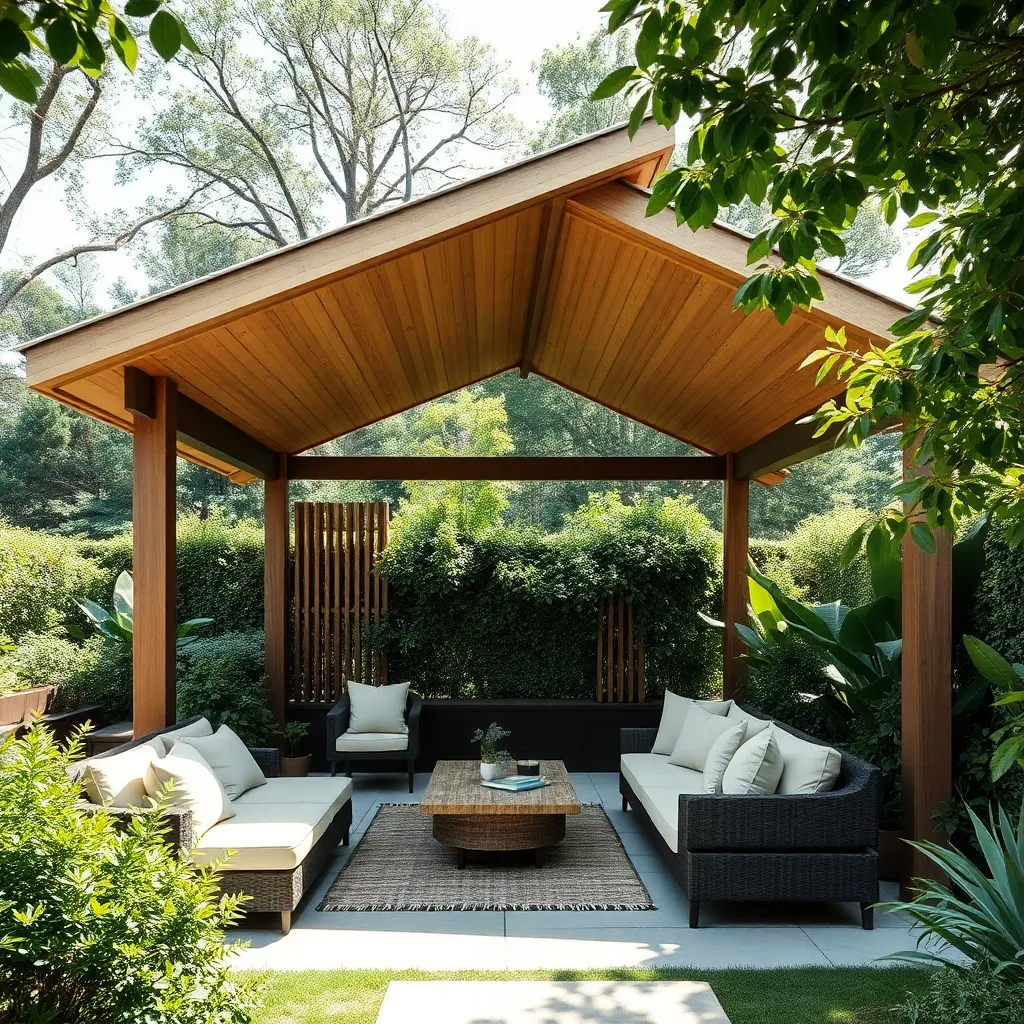
When designing a pavilion layout that prioritizes privacy, consider strategically positioning the structure within your landscape. Situate your pavilion near natural barriers like hedges or trees, which can serve as organic screens. For enhanced seclusion, install lattice panels or bamboo screens around the perimeter. These elements not only provide privacy but also contribute to a cozy, intimate atmosphere. Beginners can start with simple lattice panels, while more advanced DIYers might explore custom-built wooden screens for a tailored fit.
Incorporating multi-level designs can also increase privacy by creating distinct zones within the pavilion. Use raised decks or platforms to alter the pavilion’s height, effectively blocking sightlines from neighboring yards. Materials like composite decking offer durability and a sleek finish for these raised areas. For additional privacy, consider planting tall, dense shrubs around the pavilion’s base, such as boxwoods or arborvitae, which grow quickly and provide year-round coverage. These techniques not only enhance privacy but also add aesthetic value, making your outdoor space a secluded sanctuary.
Adapting for Multi-Use Functionality
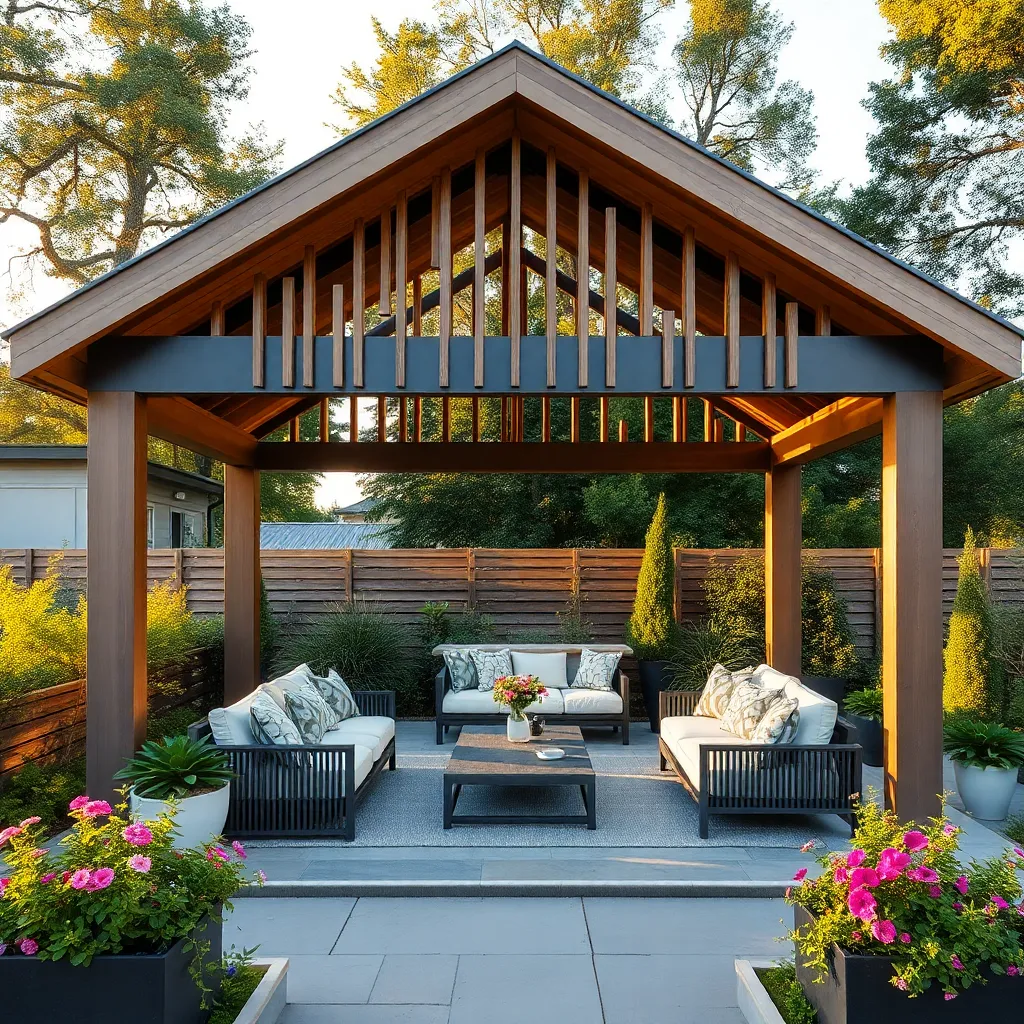
When designing a freestanding pavilion with multi-use functionality, start by considering how different zones can serve various purposes. Utilize modular furniture, such as sectional sofas or foldable tables, to easily transition from a dining area to a lounging space. Incorporate removable partitions to create adaptable spaces, ensuring that each area can be customized for specific events or everyday use. This approach allows homeowners to maximize the versatility of their outdoor spaces, catering to both intimate gatherings and larger social events.
Using durable, weather-resistant materials is crucial for a pavilion intended for multiple functions. Opt for robust options like cedar or pressure-treated wood for the structure, which offer longevity and low maintenance. Consider installing retractable screens or shades to provide shelter from the elements while allowing flexibility in open-air settings. For advanced design, integrate built-in lighting and sound systems, which can enhance the ambiance and functionality of the space, making it a seamless extension of your home. With these strategic choices, your pavilion can become a dynamic centerpiece for outdoor living.
Aligning Pavilion with Landscape Aesthetics
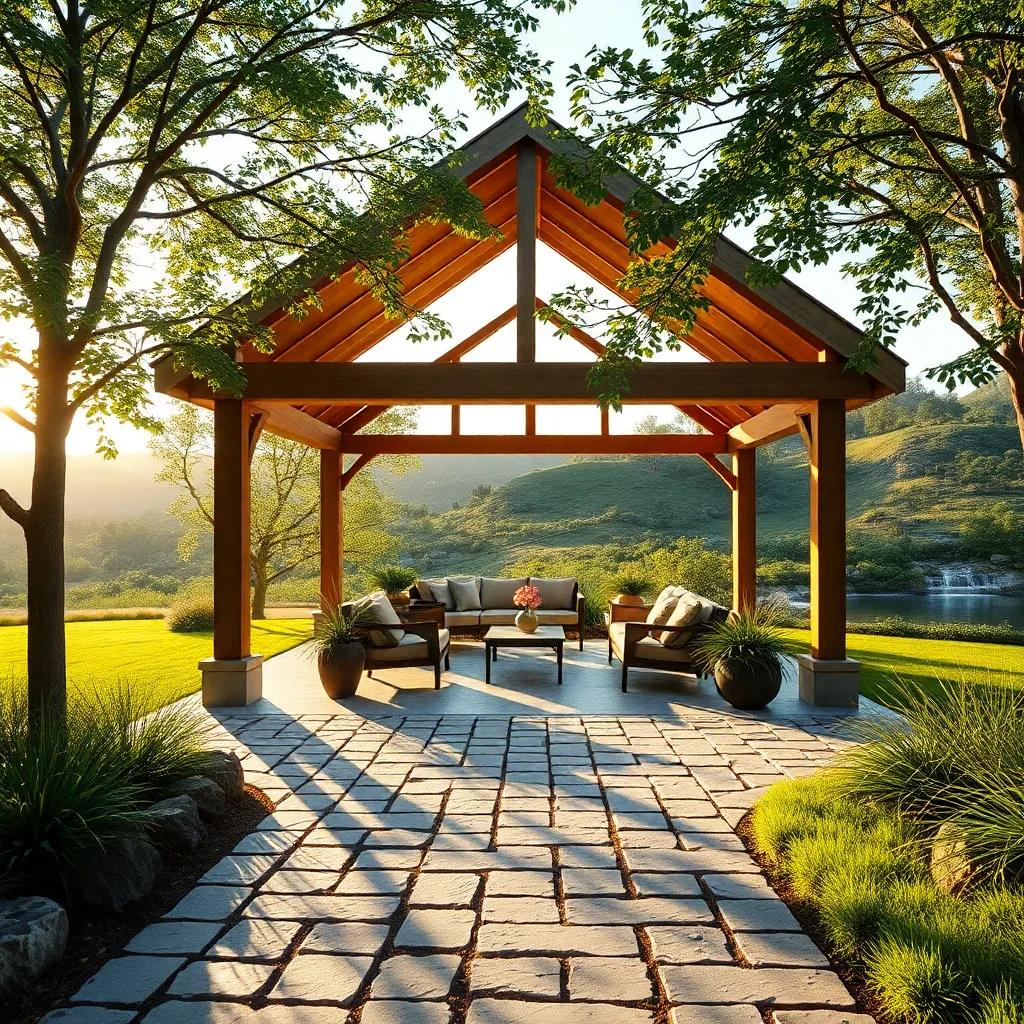
To ensure your pavilion complements your landscape aesthetics, start by choosing materials that resonate with your garden’s existing elements. Consider using natural wood or stone to blend seamlessly with greenery, or opt for metal and glass for a modern touch. The pavilion’s design should echo the lines and forms found in your garden—whether that means arches mimicking the curve of a garden path or a color palette that mirrors your flower beds.
Position the pavilion strategically to enhance the visual flow of your outdoor space. Align it with existing focal points, such as a water feature or a flower bed, to create a cohesive look. For advanced aesthetics, incorporate vertical elements like trellises or pergola tops with climbing plants to integrate the structure with the landscape further. Remember to keep the size proportional to your garden to avoid overwhelming the space, with dimensions that allow for comfortable movement and seating arrangements.
Ensuring Accessibility and Convenience
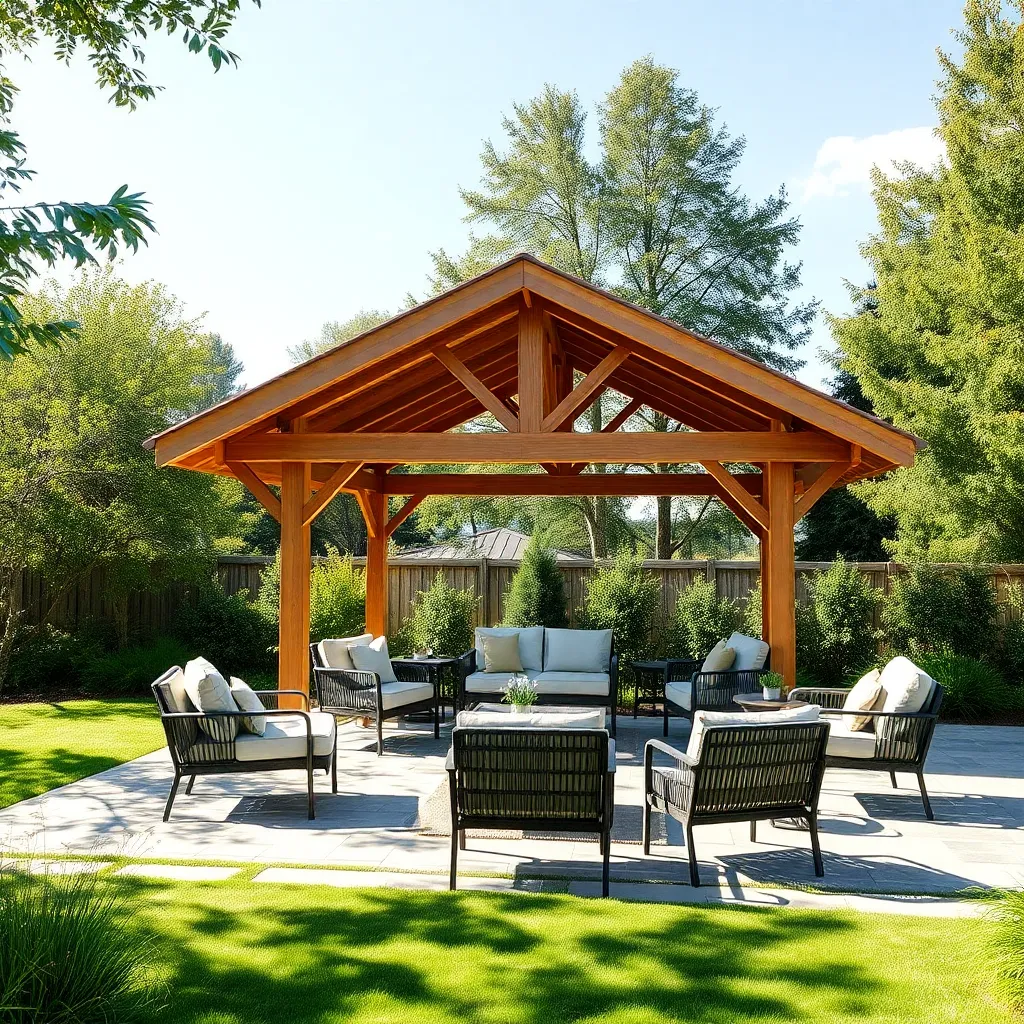
To ensure your pavilion is accessible and convenient, consider the placement of pathways leading to it. Wide, level paths made from materials like gravel or concrete pavers offer durability and ease of use. For those with mobility concerns, a minimum width of 36 inches is recommended for pathways, allowing comfortable access for wheelchairs or strollers. Additionally, incorporating solar-powered lights can illuminate pathways, enhancing safety and usability during evening hours.
Think about the pavilion’s internal layout to maximize convenience. Placing seating and tables strategically can facilitate movement and create an inviting atmosphere. Use weather-resistant materials like teak or powder-coated aluminum for furniture, ensuring longevity and ease of maintenance. For advanced setups, consider integrating features like built-in storage or a small kitchen counter to accommodate outdoor dining and entertaining needs. These thoughtful design elements can significantly enhance the functionality and enjoyment of your outdoor space.
Balancing Shade and Sun Exposure
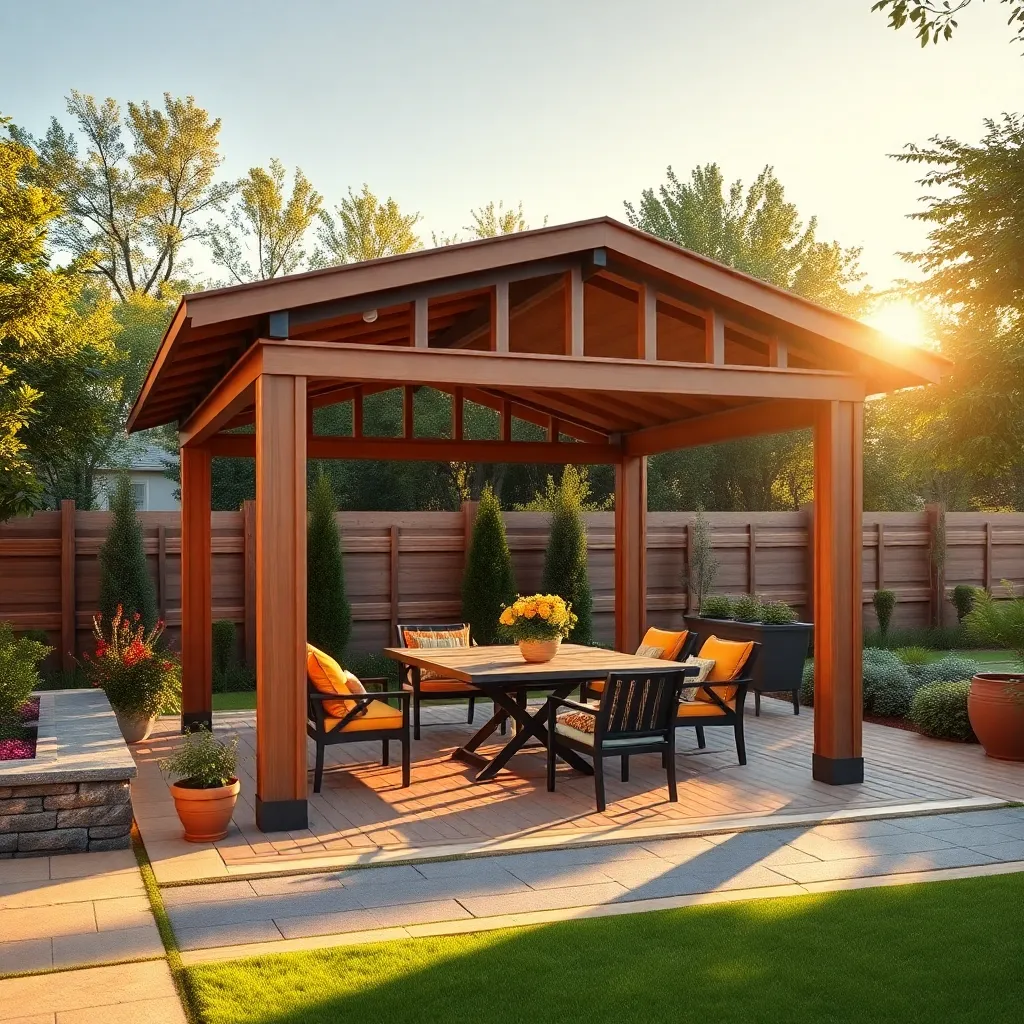
Positioning your pavilion to balance shade and sun exposure is crucial for comfort and plant health. Consider the sun’s path across your yard; placing the structure with its back to the east can provide morning shade and afternoon sun. Use materials like **retractable fabric canopies** or **adjustable louvers** to increase flexibility, allowing you to control the amount of sunlight or shade, depending on the time of day and season.
Incorporating surrounding elements into your design can further enhance comfort. Planting **deciduous trees** nearby can offer seasonal shade, while decorative **trellises** with climbing plants like wisteria or grapes add both beauty and shade. For a more advanced approach, consider installing **solar panels** on the roof to not only provide shade but also generate energy, offering a sustainable benefit to your outdoor space.
Incorporating Green Elements Naturally
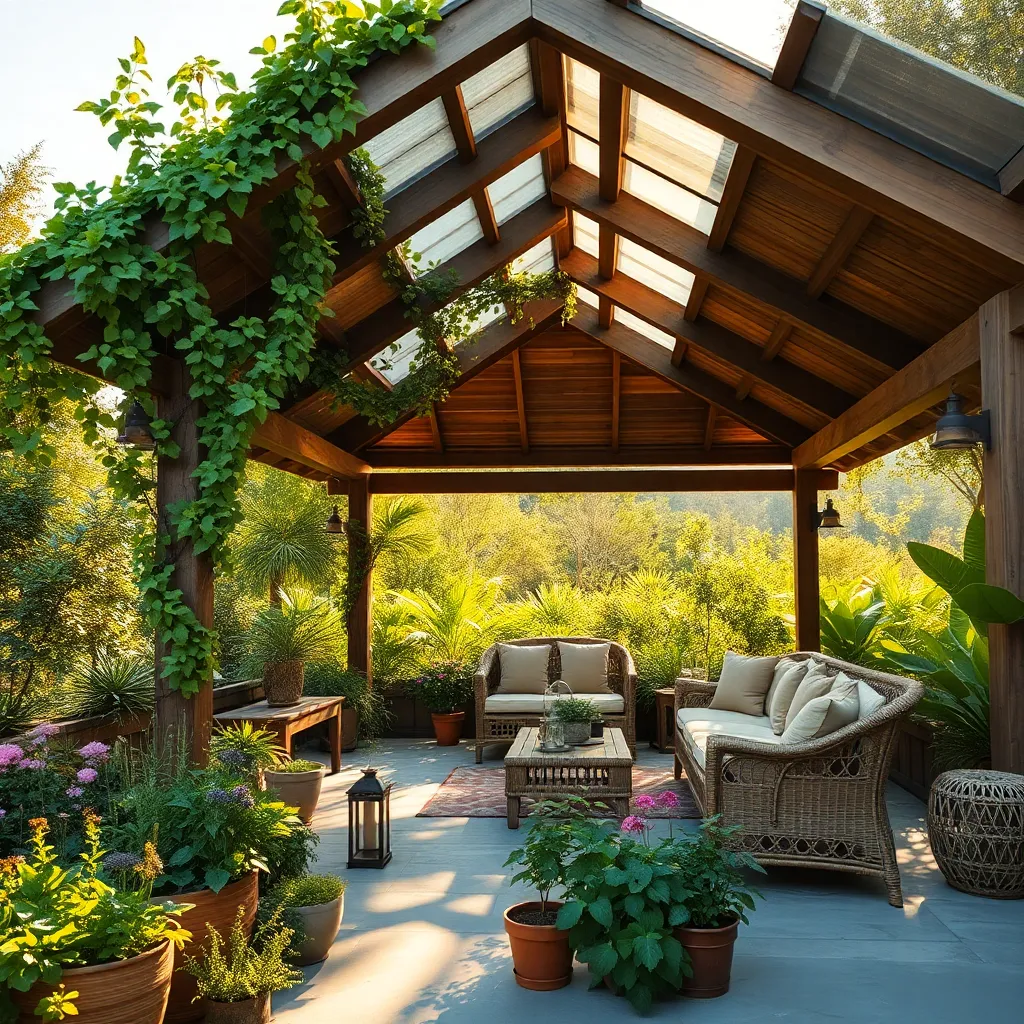
To seamlessly integrate green elements into your pavilion, consider using natural materials like bamboo or reclaimed wood for a sustainable and eco-friendly design. These materials not only blend beautifully with outdoor surroundings but also offer durability against various weather conditions. For a touch of greenery, incorporate vertical gardens or climbing plants such as jasmine or clematis, which can be trained to grow along trellises attached to the pavilion. This approach provides shade and enhances the natural aesthetic without overwhelming the structure.
For those looking to elevate their pavilion’s design, advanced options include living roofs or green walls, which can help insulate the structure while promoting biodiversity. When implementing these, ensure the pavilion’s roof can support the additional weight and consider using lightweight planting mediums to reduce strain. Additionally, opt for native plants that require minimal maintenance and irrigation. This not only preserves local ecosystems but also reduces upkeep, making your pavilion a sustainable retreat.
Conclusion: Creating Beautiful Outdoor Spaces
In exploring the ’13 Freestanding Pavilion Layouts’, we’ve unearthed transformative concepts to nurture your relationship. From fostering open communication and embracing vulnerability, to navigating conflict with grace and celebrating each other’s individuality, these layouts serve as a blueprint for deeper connection. We delved into the importance of shared goals, the art of compromise, and the value of quality time, offering a comprehensive guide to building a resilient partnership.
As an actionable next step, take a moment today to discuss one of these concepts with your partner. Whether it’s setting new goals together or simply expressing gratitude, even small actions can create ripples of positivity in your relationship.
To ensure these insights are always at your fingertips, bookmark this article now. Having quick access to these valuable strategies will empower you to revisit and apply them as your relationship evolves.
Remember, relationship success is a continuous journey, not a destination. By integrating these principles into your daily life, you are investing in a future filled with understanding, growth, and love. So, take that first step, and watch your relationship flourish.


